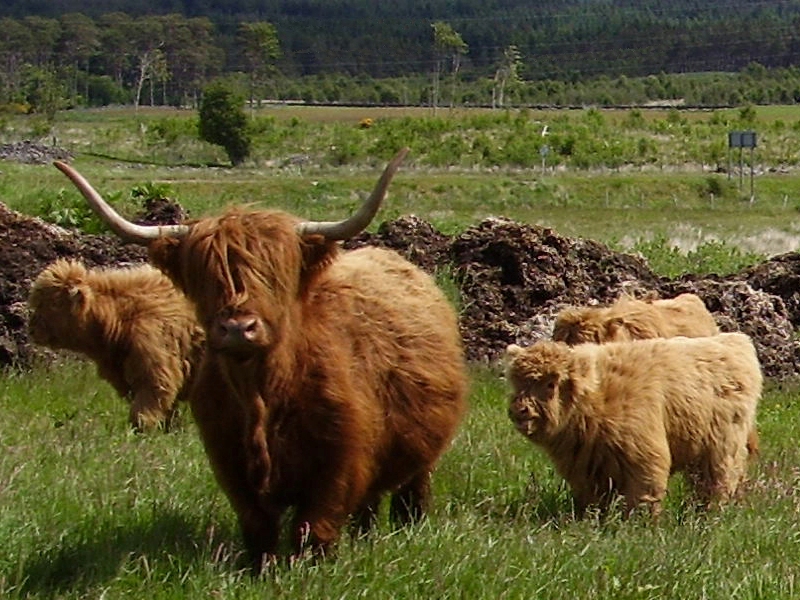Highland cow, known for their distinctive long horns and shaggy coats, are one of Scotland’s most beloved animals. With their gentle nature and hardy constitution, these cattle have become iconic symbols of the Scottish Highlands.

History and Origin
Highland cows, also called “Heilan coos” in Scots, have been roaming the rugged terrains of Scotland for centuries. They are one of the oldest registered cattle breeds, with origins dating back to the 6th century. Their unique features evolved to withstand the harsh weather of the Scottish Highlands.
Distinctive Features
- Shaggy Coat: The double-layered coat protects them from cold and rain, allowing them to thrive in severe climates.
- Long Horns: Both males and females sport impressive curved horns, used for foraging in the snow and self-defense.
- Variety of Colors: While red is the most common color, Highland cows can also be black, brindle, yellow, white, and dun.
Temperament and Behavior
Highland cows are known for their docile and friendly nature. Despite their formidable appearance, they are gentle creatures, making them ideal for farms and petting zoos. They are also highly intelligent and have strong maternal instincts.
Role in Agriculture
These cows are more than just picturesque farm animals:
- Beef Production: Highland beef is lean, flavorful, and low in cholesterol, making it a premium product.
- Land Management: Their grazing habits help maintain natural landscapes and promote biodiversity.
Cultural Significance
The Highland cow is a symbol of Scotland, representing strength, resilience, and natural beauty. They frequently appear in Scottish art, souvenirs, and tourism campaigns, drawing visitors from around the globe.
Conservation and Popularity
While once considered a rare breed, the popularity of Highland cows has surged in recent years. Efforts by farmers and breed associations have ensured their conservation and promoted their appeal worldwide.

Conclusion
Highland cow are more than just adorable, shaggy creatures; they are resilient, useful, and integral to Scotland’s cultural identity. Whether you see them in a field or featured in art, these gentle giants leave a lasting impression on all who encounter them.



